Situated in the 18th arrondissement, the iconic ‘Butte Montmartre’ is one of Paris‘ most famous districts. Full of contrasts, encircled by busy boulevards, it has kept the atmosphere of a village remarkably intact with intimate squares, winding narrow streets, tiny terraces, and long stairways. Let’s discover this charming district from bottom to top!
Montmartre: a bit of history
The top of the hill of Montmartre has been a sacred site where druids were thought to have worshipped there. The Romans had built temples dedicated to gods Mars and Mercury, hence the name ‘Mons Martis’.

St Denis in Montmartre
A first Christian chapel was built on the site circa 270 AD in honour of Paris’ first bishop, St Denis. According to the legend the Patron Saint was beheaded there by the Romans. After his execution, the body of Denis would have picked its head up and started to walk while the mouth was delivering a complete sermon. The body stopped its stroll somehow and at the site where he fell completely dead was later erected a small shrine: the present-day St Denys-la-Chapelle. The name was eventually anglicised as Sydney.
A powerful abbey in the Middle Ages
In the Middle Ages, a royal abbey grew up around the chapel. The Montmartre Abbey, founded by King Louis VI in 1133 was a Benedictine abbey for women.
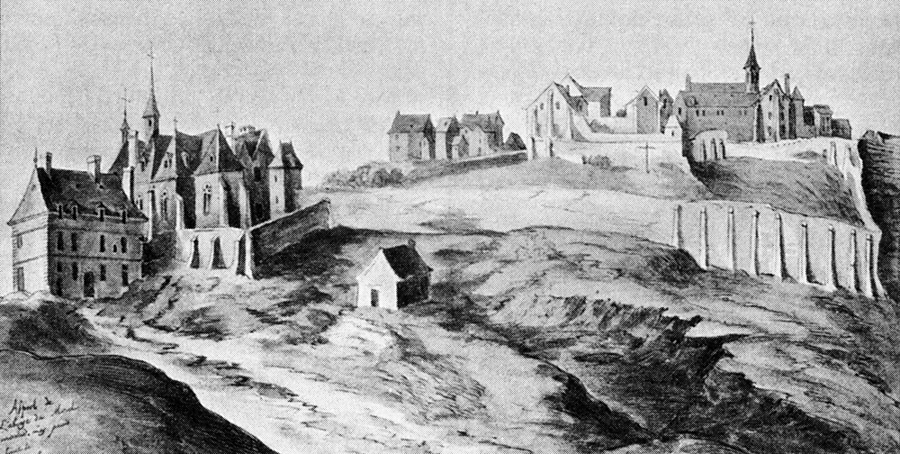
The dismantlement of the abbey at the Revolution
The abbey of Montmartre was dismantled in 1792, during the French Revolution and its occupants were executed or scattered. The 70-year-old abbess, Marie-Louis de Montmorency-Laval was guillotined on the 24th of July 1794 and her body was buried in the Picpus cemetery.
With the creation of départements in France, the commune of Montmartre was included in the département of Seine (now Paris). The village was temporary renamed as Mont-Marat during the Revolution in honour of the radical politician assassinated in 1793.
1860: when the village joined Paris
In 1860, the village of Montmartre was annexed by the city of Paris. The mount was known for its stone quarries and gypsum mines, windmills as well as vineyards. From the mid-19th century, it became a popular place thanks to the opening of many cafés, cabarets and dancing halls (guinguettes).
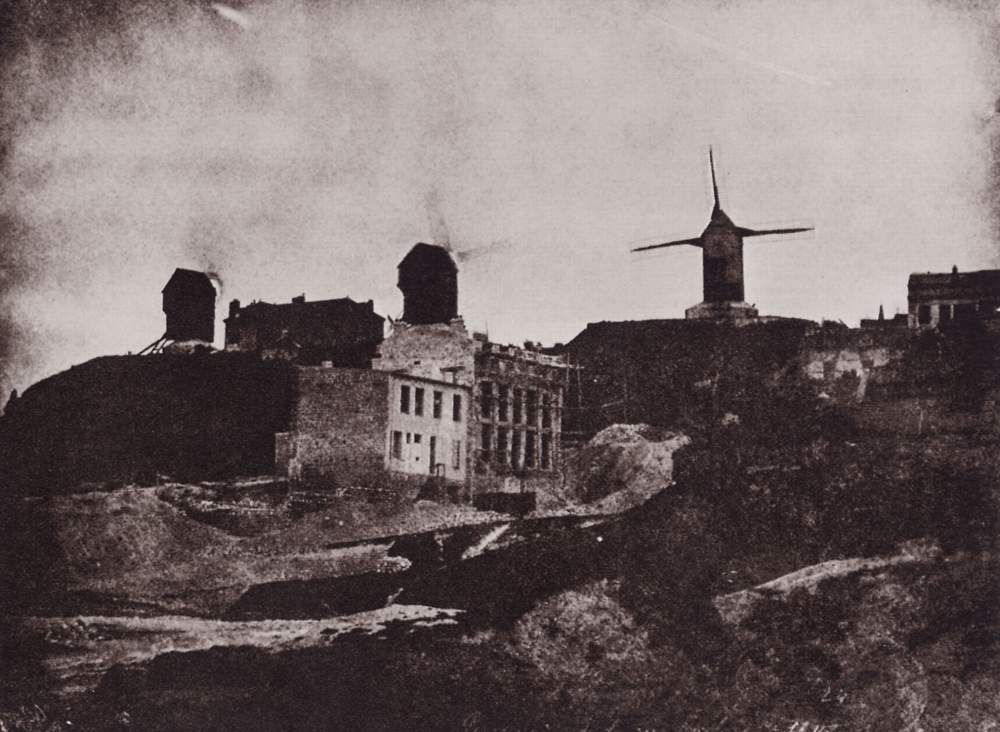
During the tragic events of the Paris Commune of 1871, hundreds of commune members hid in the chalk mines at the top of the hill. The government ordered the exit to be dynamited, hence killing all rebellious men.
Paintings in Montmartre
In the second half of the 19th century and early 20th century, the hill of Montmartre was a mecca for painting, with the presence of great painters such as Degas, Matisse, Modigliani, Picasso, Pissarro, Renoir, Steinlen, Toulouse-Lautrec, Van Gogh and Utrillo. In the aftermath of World War I, painters and artists left Montmartre as the village lost its appeal in favour of the Montparnasse district in the Left Bank.
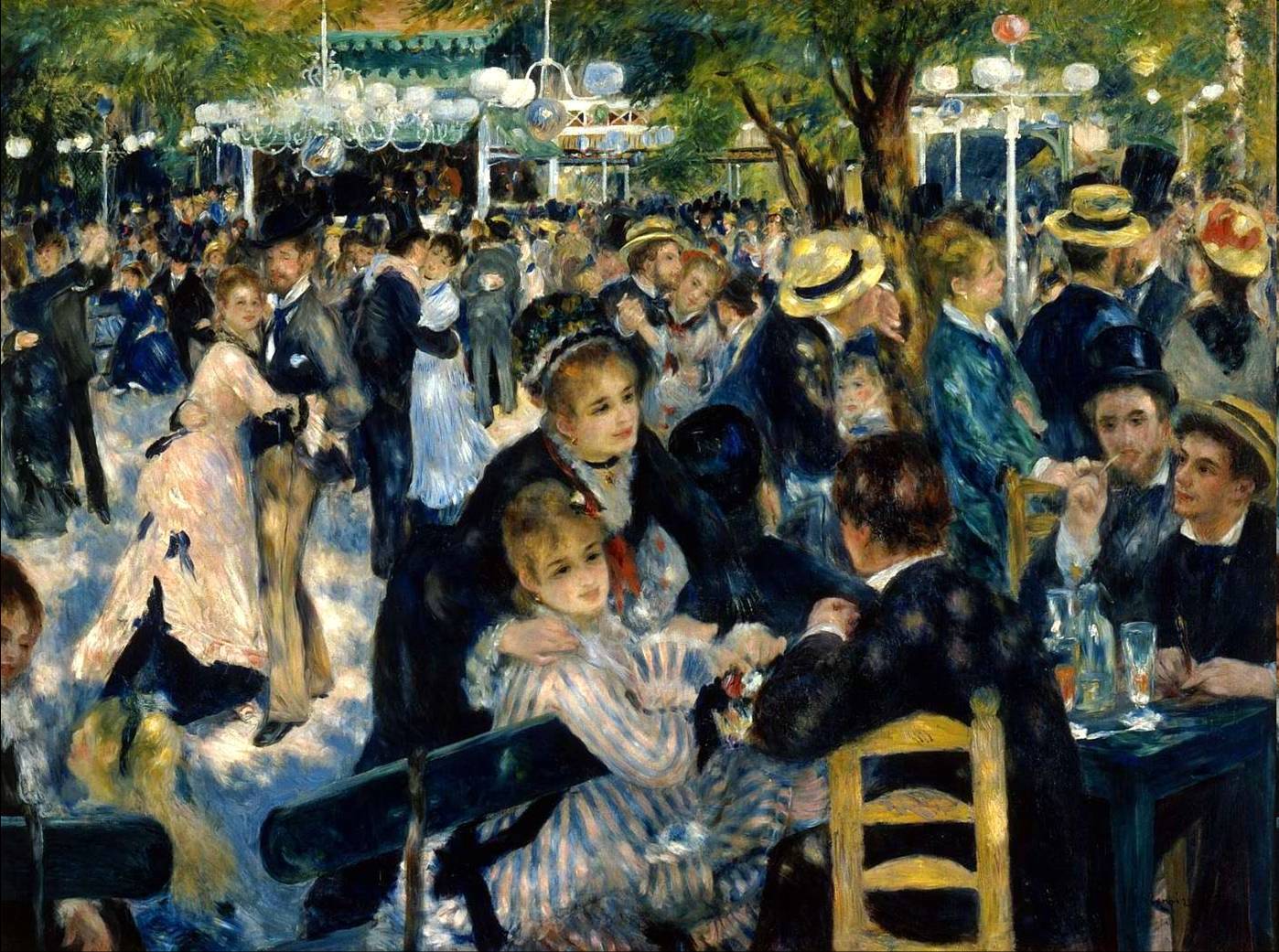
The district today
Today mobs of tourists ascent the hill to admire the stunning view over the roofs of Paris before heading to the little square of Place du Tertre where portrait artists and souvenir shops await them eagerly. Despite the masses of tourists, there are still a few picturesque streets that have kept their village-looking charm away from the hustle and bustle of hot spots such as Sacré-Cœur and Place du Tertre.
Sacré-Cœur and surroundings
Square Louise Michel
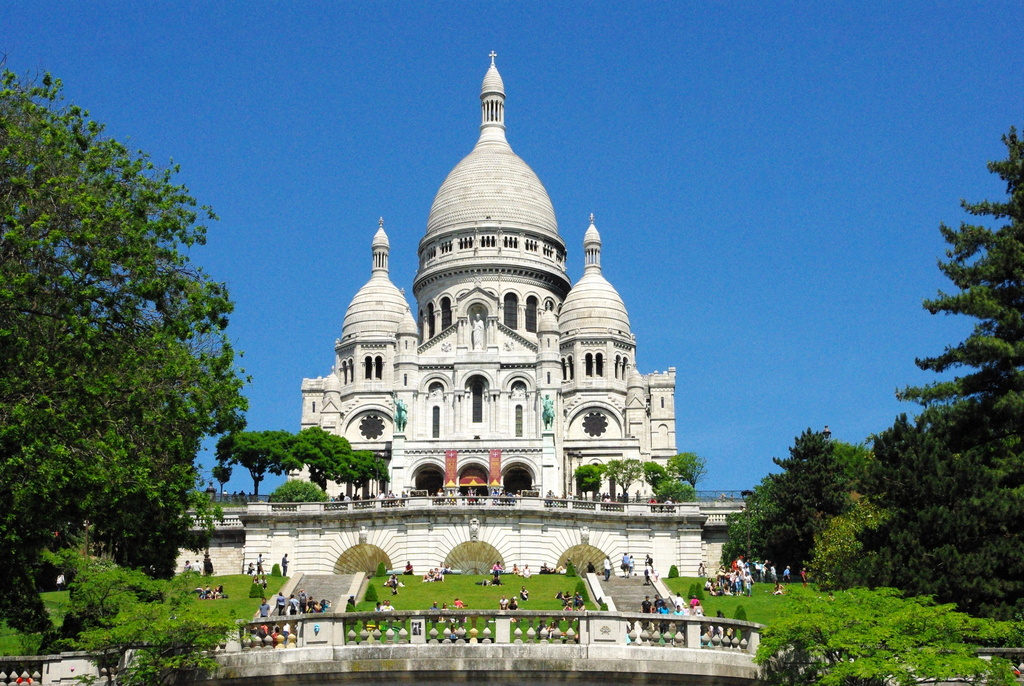
The square is known until 2004 as Square Willette is a steep green area extending upwards to the top of the hill in a series of terraces with lawns, flowerbeds, shrubs, and trees.
The 222 steps that lead up to the top can be avoided by walking on one of the gently sloping paths that run alongside the garden.
The square offers fantastic views of the Sacré-Cœur Basilica and the roofs of Paris.
Another option to reach the top of the hill is to climb the stairs of bordering streets: Rue Maurice Utrillo or Rue Foyatier.
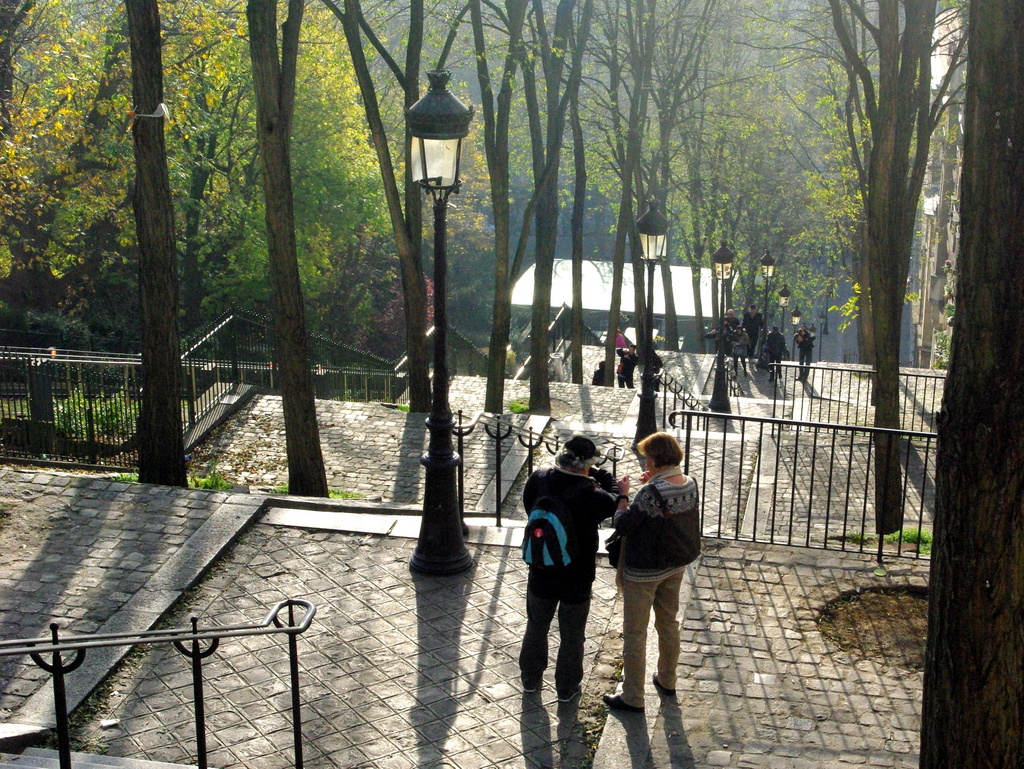
The great view from the parvis of Sacré-Cœur extends to the central and eastern districts of Paris: Notre-Dame, the Panthéon, the Bastille Opera…
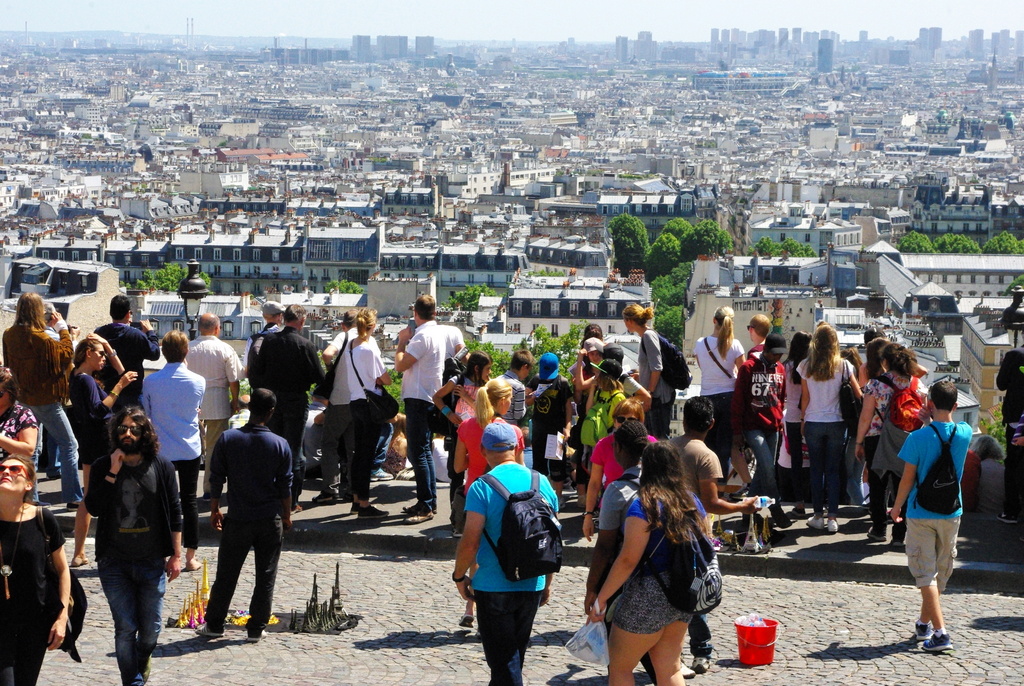
Find out more about the ascent to the forecourt of Sacré-Cœur.
The Sacré-Cœur Basilica

The majestic Basilica of Sacré-Cœur is one of Paris’ most visited monuments. The sanctuary stands like a whipped cream edifice atop the hillock of Montmartre, sharing more resemblance with the Hagia Sophia in Istanbul than the nearby Notre-Dame cathedral.
Find out more about the Sacré-Cœur Basilica.
Parc de la Turlure
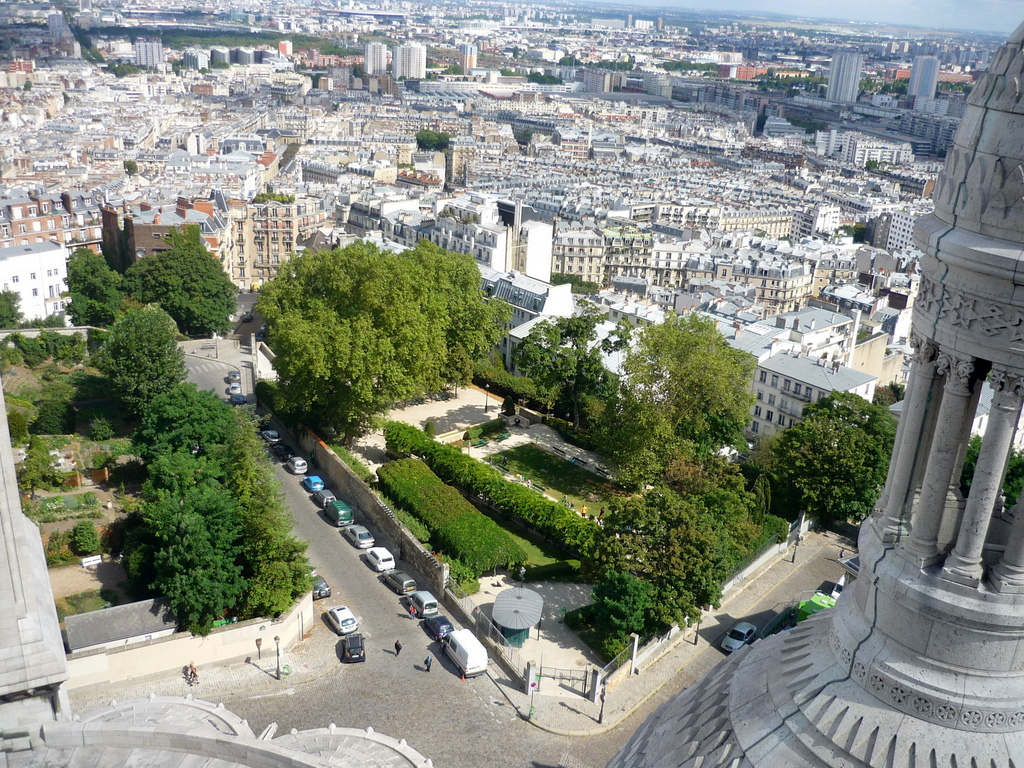
Situated behind the Sacré-Cœur Basilica, the public garden offers fine views of the Sacré-Cœur church and the northern and eastern suburbs of Paris.
Church of St. Peter of Montmartre
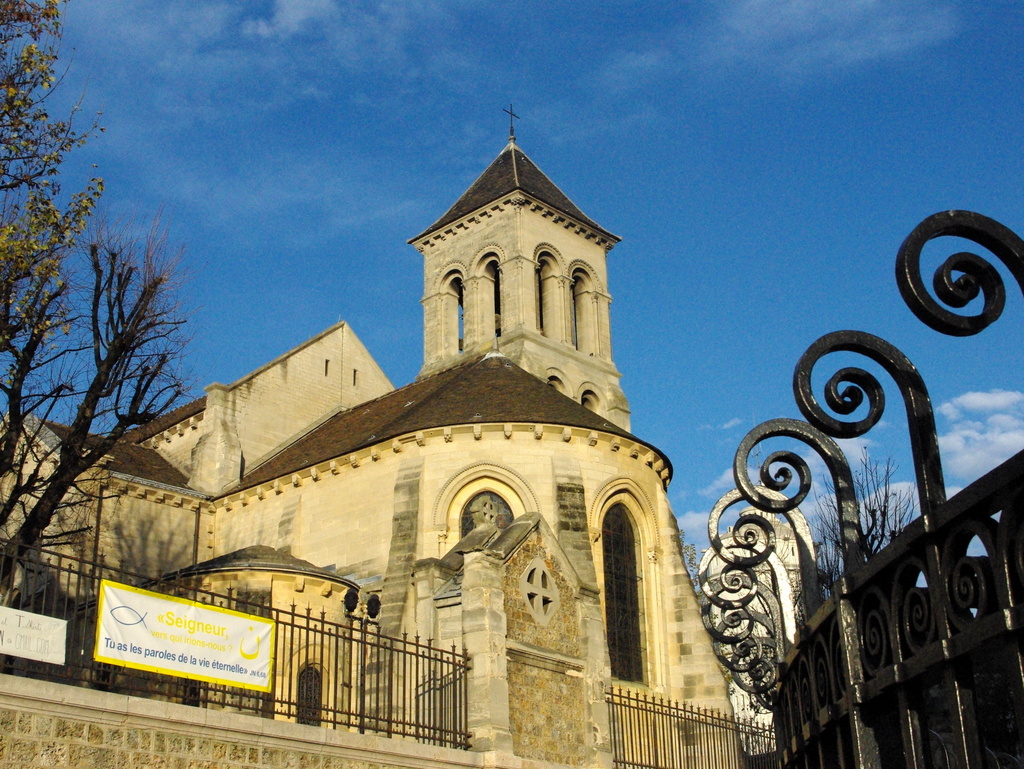
The construction of the sanctuary started in 1134 and completion took place in the second half of the 12th century. Built in Romanesque and early Gothic styles, it is Paris’ oldest parish church after St. Germain-des-Prés.
St. Peter of Montmartre was the abbey church of the royal abbey whose buildings were initially located to the south of the church. During the French Revolution, the church was desecrated and became a Temple of Reason. St. Pierre was used as a warehouse for munitions during the Paris Commune events.
St. Pierre of Montmartre is flanked by Paris’ smallest graveyard, the Cimetière du Calvaire (the Calvary Cemetery).
Find out more about the Church of St. Peter of Montmartre.
Water Tower of Montmartre

Situated in the rue du Mont Cenis not far from the Sacré-Cœur stands the tall Water Tower of Montmartre, built in 1927 with the same white stone of the basilica. Still in use, it has a capacity of 700m3 and supplies the houses situated on the top of the hill.
Place du Tertre and surroundings

The little shaded square of Place du Tertre is situated just a stone’s throw away from the Sacré-Cœur Basilica and is the highest square of Paris at 130 m.
Today the Place du Tertre is the tourist centre of Montmartre with cafés, restaurants, art galleries. Across the square, various artists set up their easels in the afternoon, tempting the visitors with their works of art: personalised charcoal portraits, water paintings, drawings, sculptures, etc.
Find out more about the Place du Tertre.
Place du Calvaire and Rue Poulbot

In 1805 a calvary was set up at the top of the Montmartre Hill not far from St. Peter Church. Until 1873 the square was named Place Sainte-Marie. It is now a pedestrianised cobblestone square dotted with typical Parisian lampposts and benches. It is continued by the rue Poulbot where the Espace Dalí is found. The museum hosts a permanent exhibition of around 300 original artworks of Salvador Dalí.

Carrefour de l’Auberge de la Bonne-Franquette
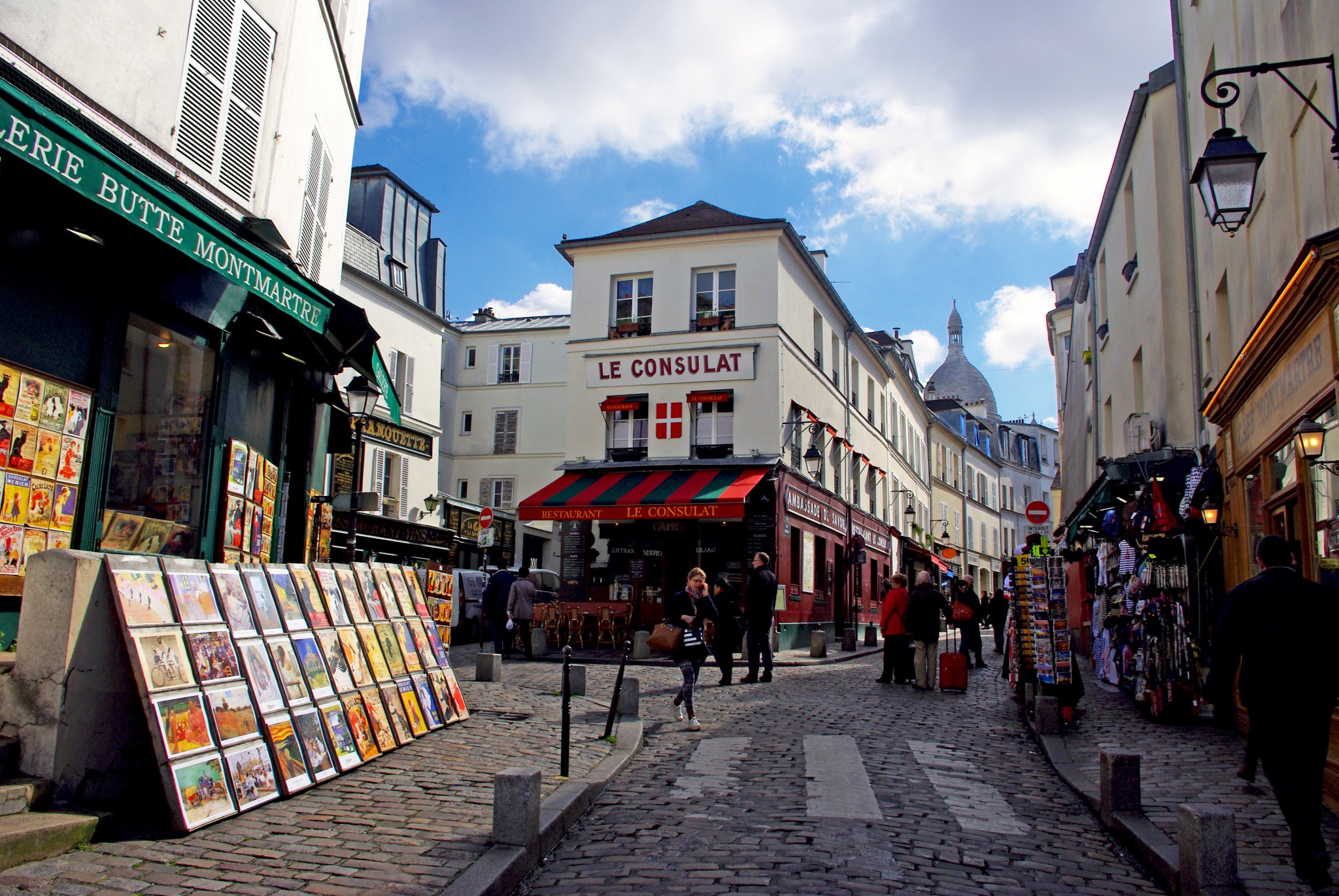
The streets of Montmartre have kept their village-like charm thanks to strict regulations in building developments. This is particularly visible at the crossroads with rue Norvins, rue des Saules and rue Saint-Rustique.

Often painted by Maurice Utrillo, the cobblestone streets and their small houses refer to the idea of Old Montmartre that first comes to mind.
Rue Saint-Rustique, which connects La Bonne-Franquette to the Rue du Mont Cenis, is Paris’ highest street at 130m. The street was painted by Utrillo in 1926.

Rue du Chevalier de la Barre

Linking the chevet of the Sacré-Cœur to the rue du Mont-Cenis, the narrow little street of rue du Chevalier de la Barre owes its name to Jean-François Lefèvre, Knight of La Barre (1746-1766) who was allegedly sentenced to death for blasphemy.
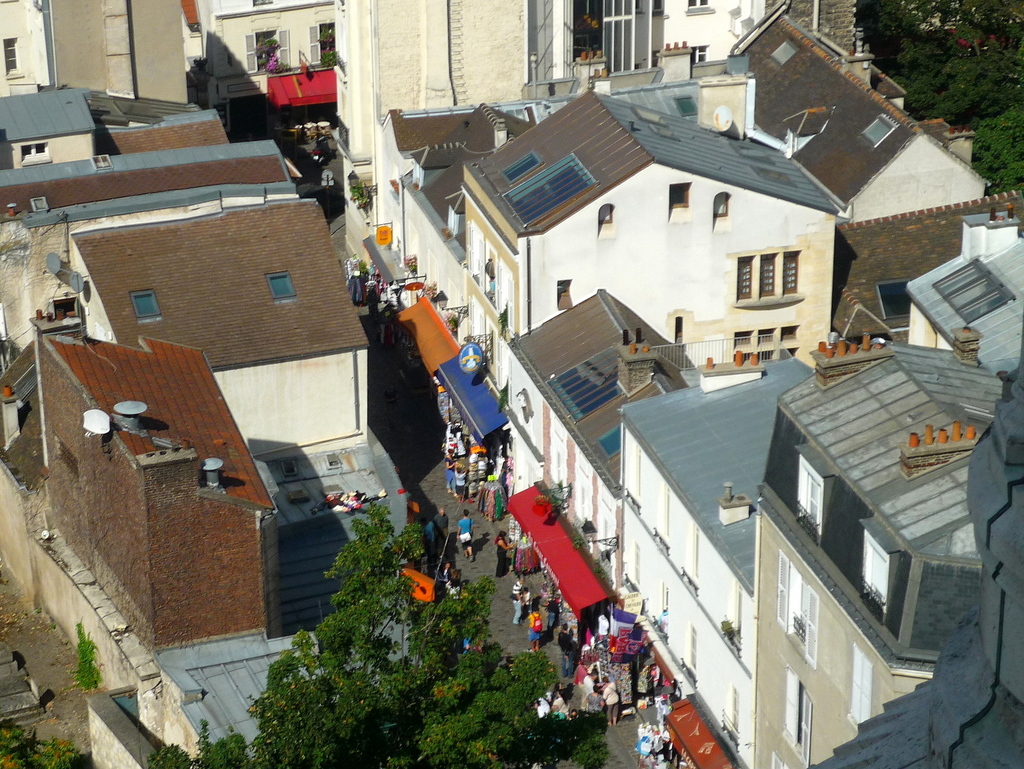
Today the street is bordered by tacky souvenirs stores and often overrun with tourists. It offers an interesting view of the dome and turrets of the Sacré-Cœur rising above the roofs.

Place Jean Marais
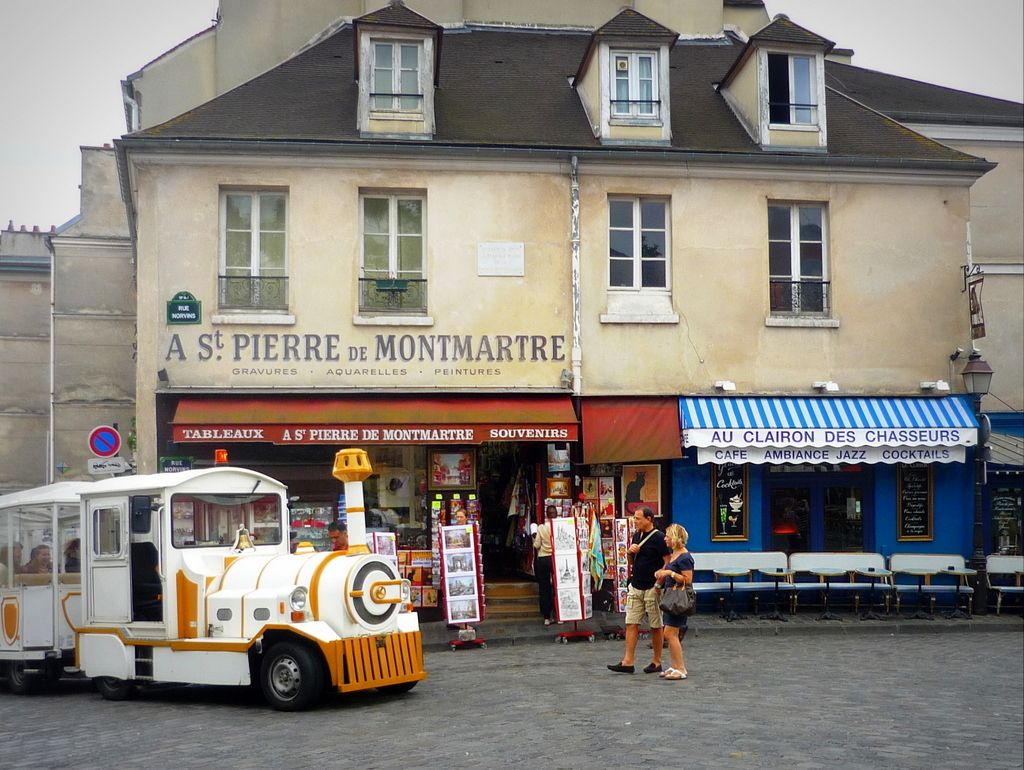
The crossroads with rue du Mont Cenis and the Place du Tertre has taken the name of Place Jean Marais (1913-1998) since 2007. French actor Jean Marais lived in Montmartre from the 1970s to his death in Cannes. The little square is the forecourt of the St. Pierre of Montmartre church.
Rue Saint-Vincent
The rue Saint-Vincent is bordered by three interesting sites: the vineyard of ‘Clos de Montmartre’, the old looking house of the Lapin Agile cabaret, and the small cemetery of St. Vincent.
The vineyard of Montmartre
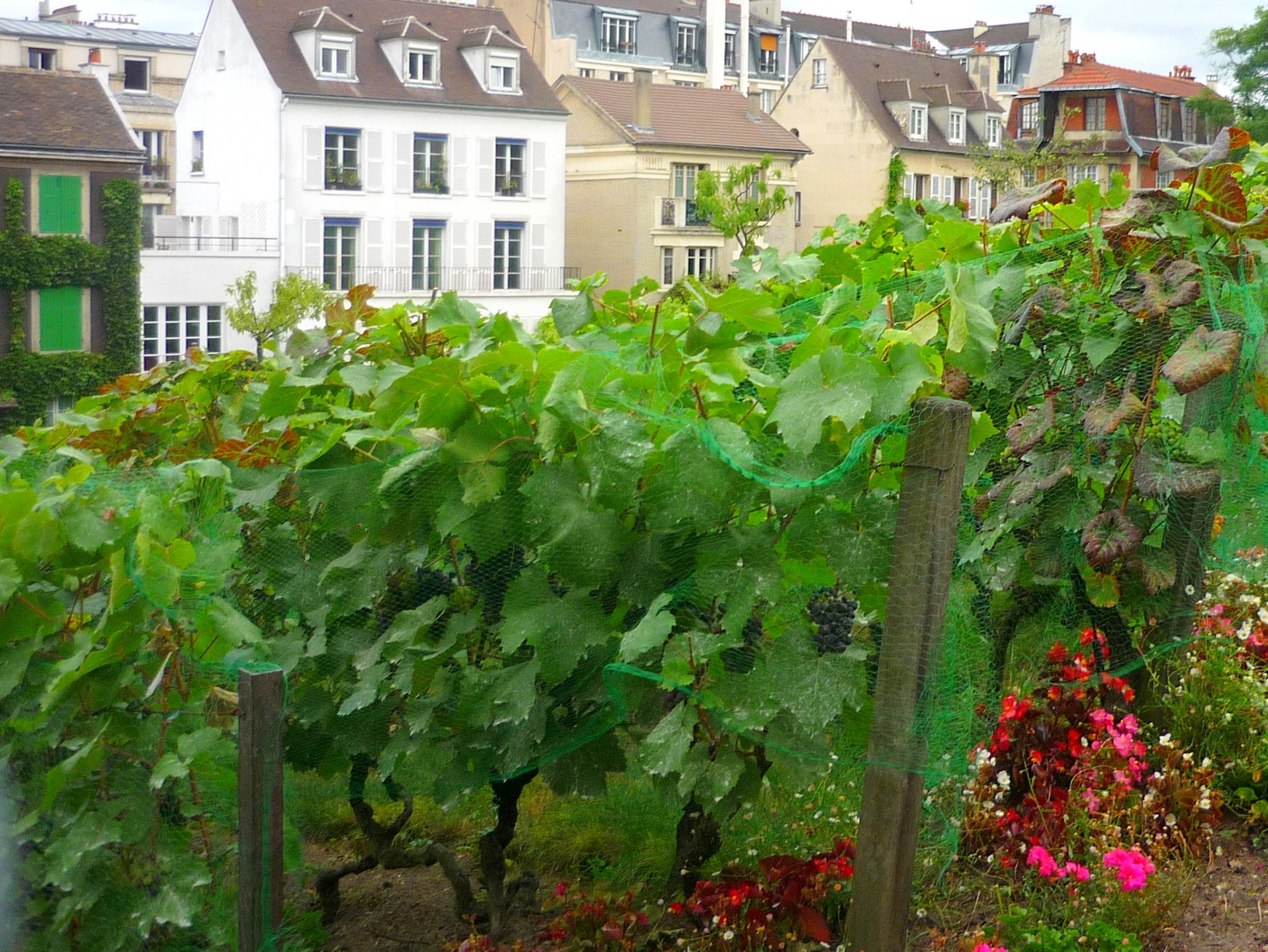
The small patch of vineyard situated on a steep hill in rue Saint-Vincent seems at odds in Paris. Tourists may not know that the Île de France was once a wine-making region and vineyards were found in Issy-les-Moulineaux, Rueil-Malmaison, Saint-Germain-en-Laye, Suresnes… Since 1932, the vines of Montmartre have continued the centuries-old tradition.
Find out more about the vineyard of Montmartre.
Au Lapin Agile
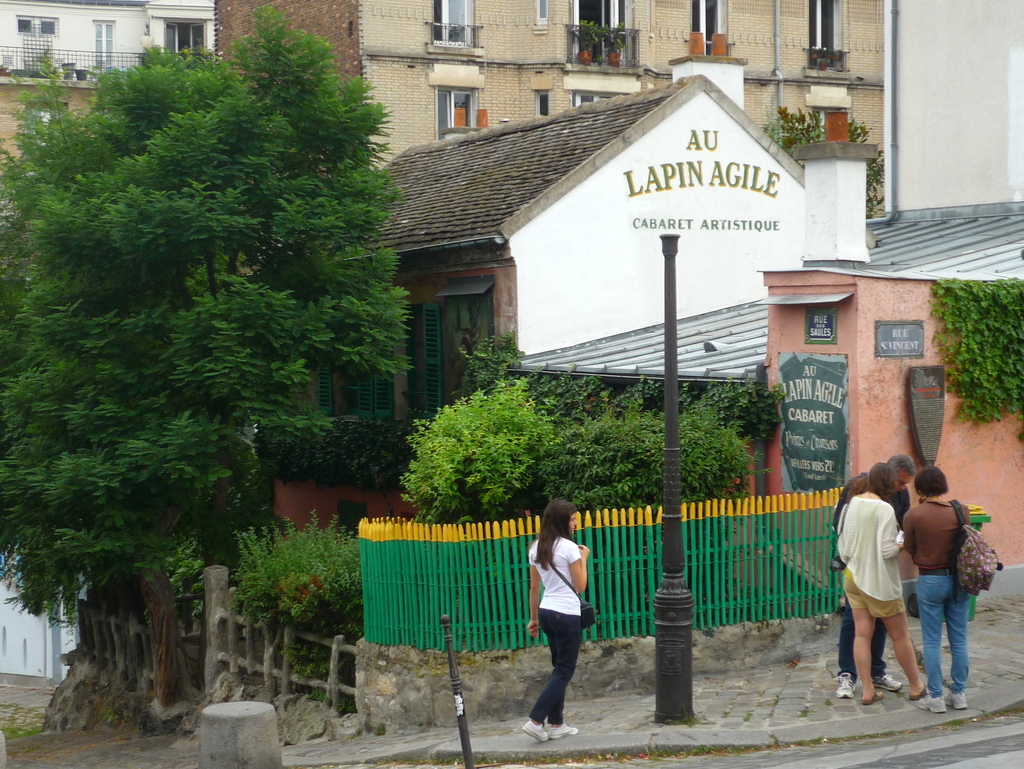
The crossroads with rue Saint-Vincent and rue des Saules is one of the most beautiful spots in Montmartre. There stands the traditional cabaret Lapin Agile (Nimble Rabbit) where literary meetings were held at the beginning of the 20th century.
The rustic stone house was formerly known as Cabaret des Assassins in reference to the murder of the owner’s son by a band of killers.
A sign painted by humorist André Gill in 1875 inspired the owner to change the cabaret’s name. It represented a rabbit escaping from a saucepan (Lapin à Gill = Gill’s rabbit).

The cabaret was bought in 1903 by cabaret entrepreneur Aristide Bruand and became a popular place for penniless writers and artists during the Belle Époque (Apollinaire, Modigliani, Picasso, Utrillo). Au Lapin Agile gained worldwide fame due to the paintings of Picasso (‘Au Lapin Agile’,1905) and Utrillo.
Today the cabaret plays vintage French songs.
The St. Vincent Cemetery
The small cemetery is the resting place for a few celebrities: painter Utrillo, writer Marcel Aymé and Swiss composer Honegger.
Around the rue de l’Abreuvoir
The picturesque rue de l’Abreuvoir leads to the Place Dalida and the romantic Allée des Brouillards and the little park of the square Suzanne Buisson. A bit further on is the peaceful haven of Villa Léandre.
Place Marcel Aymé
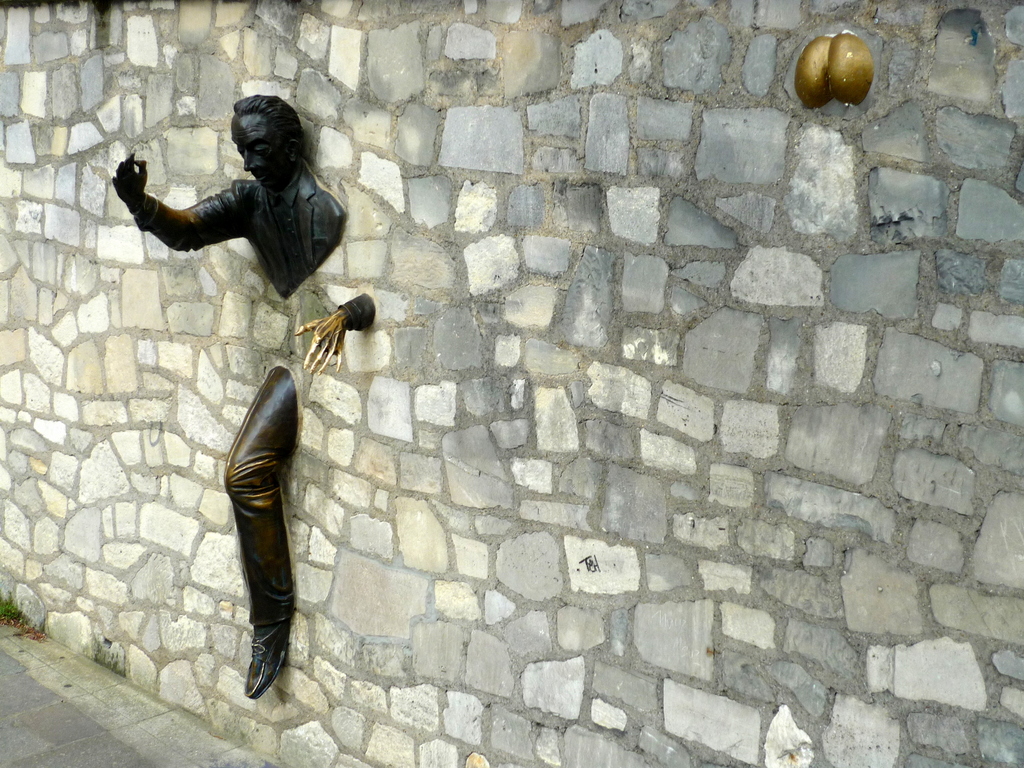
Not far from rue de l’Abreuvoir and at the crossroads with the avenue Junot, rue Girardon and rue Norvins is a little square named after French writer Marcel Aymé. The square has a statue set on a wall by Jean Marais ‘Le Passe Muraille’. It refers to a 1943 story written by Marcel Aymé (the Man who could walk through walls) which talks about a man who discovers he had the ability to walk through walls. Touching the statue’s left hand is believed to transfer some of his magical ability to the toucher which is why it is more polished than the right hand!
Rue de l’Abreuvoir
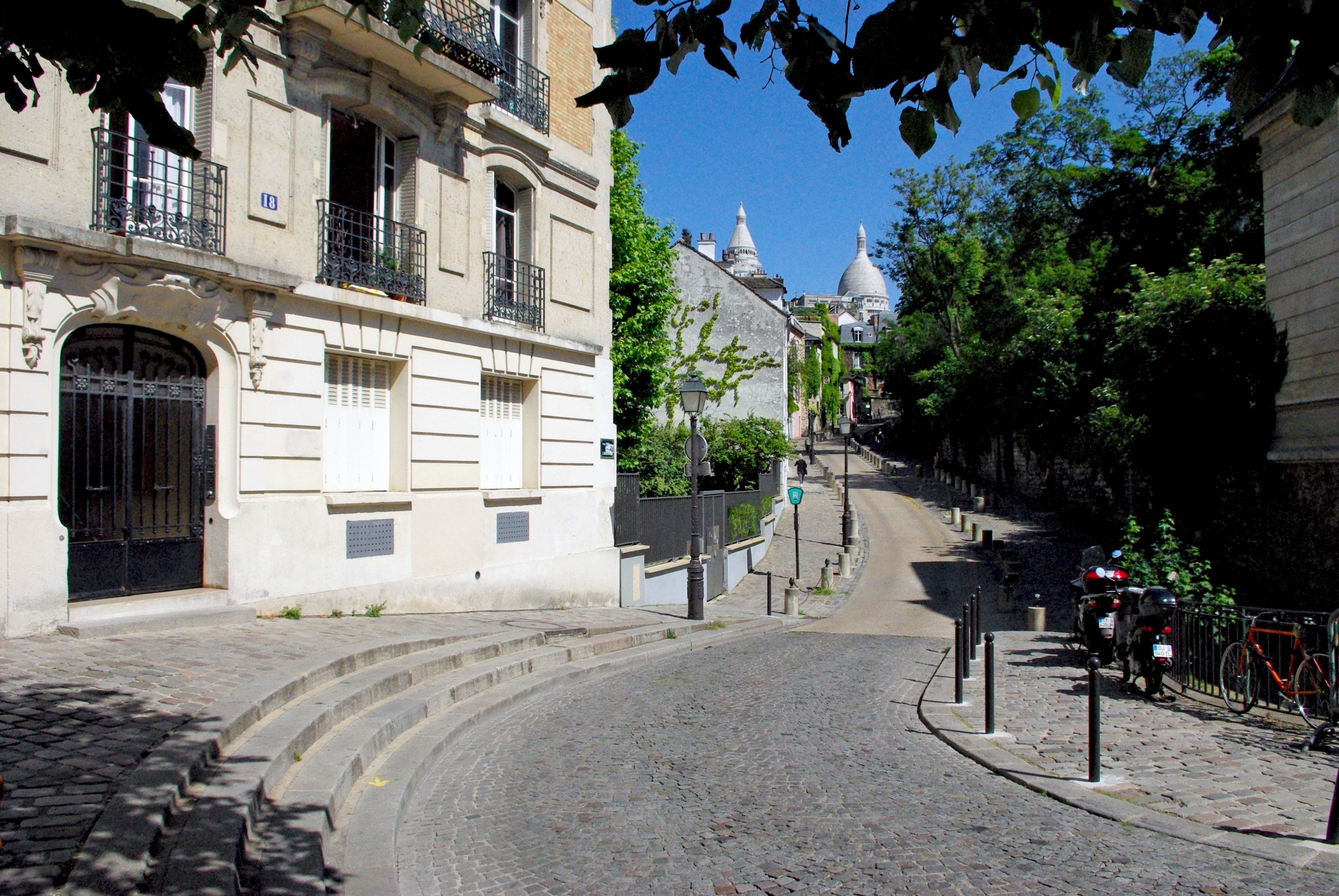
Rue de l’Abreuvoir is one of the most picturesque streets in Montmartre. It connects the Place Dalida to rue des Saules.
The street was already mentioned in 1325 under another name, ruelle qui va au But. It takes its name from the old drinking trough that was situated at number 15.
The street is bordered by medieval-looking houses. The townhouse at number 4 belonged to Commandant Henri Lachouque who was a historian fond of Napoleon and the Great Army. A sundial on the façade features a rooster and the motto ‘quand tu sonneras, je chanteray’ (when you will ring, I will sing) which seem to refer to the Austerlitz sun.
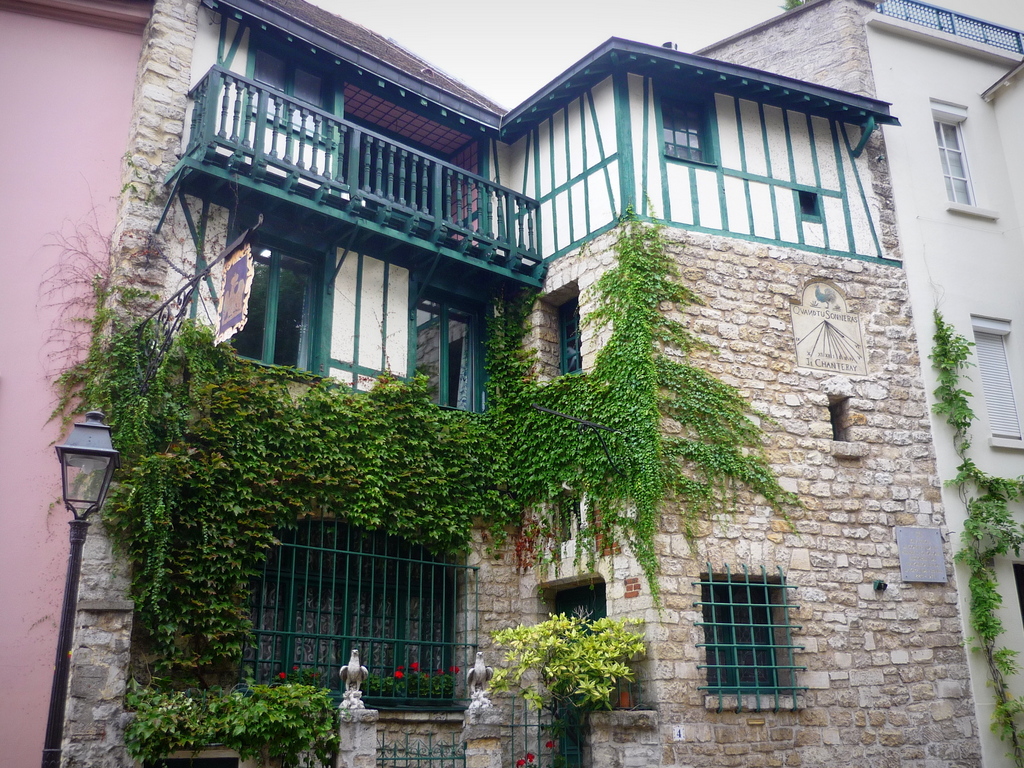

Impressionnist painter Camille Pissaro lived at number 12.

The Pink House (Maison Rose) from the first half of the 19th century was featured by many artists in their paintings, including Maurice Utrillo.
Place Dalida

In 1997, the corner of rue de l’Abreuvoir and rue Girardon was named after Dalida (1933-1987), a glamorous French singer who committed suicide at the peak of her career.

A bronze life-size bust of Dalida is a reminder of the singer who lived nearby in rue d’Orchampt.
Allée des Brouillards and Place Casadesus

The secretive Allée des Brouillards starts from the Place Dalida. Opened to the public in 1929, the lane provides a charming atmosphere with its lampposts and balustrades, without forgetting the dome of Sacré-Cœur in the distance. French painter Renoir used to live at number 6.
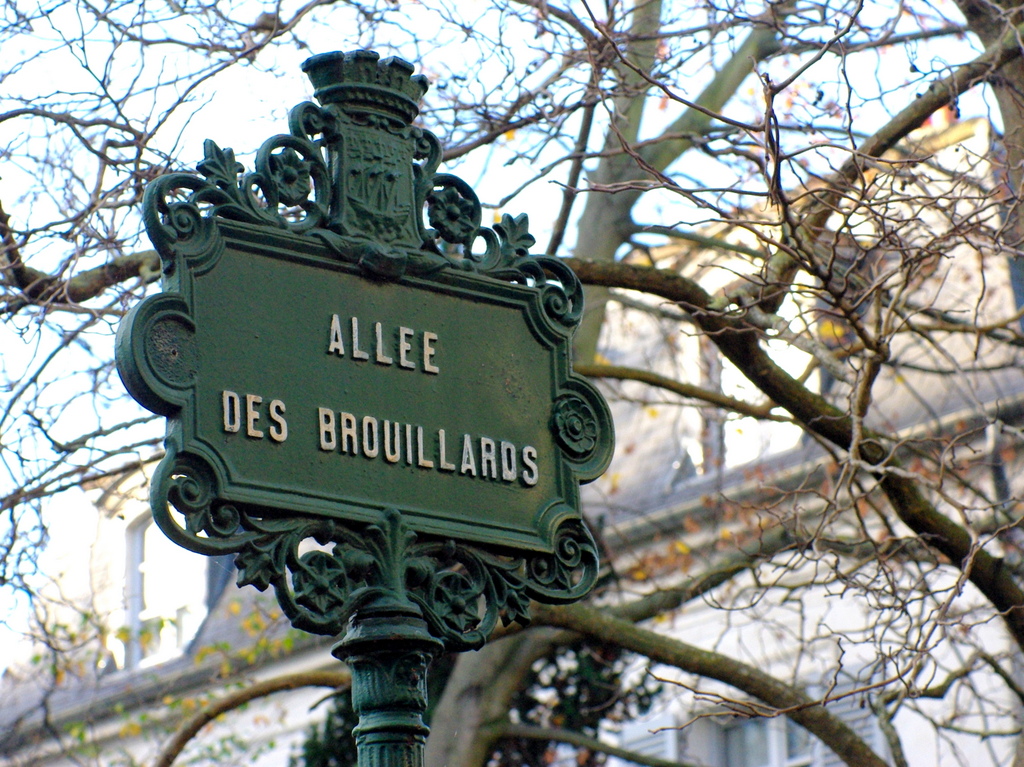
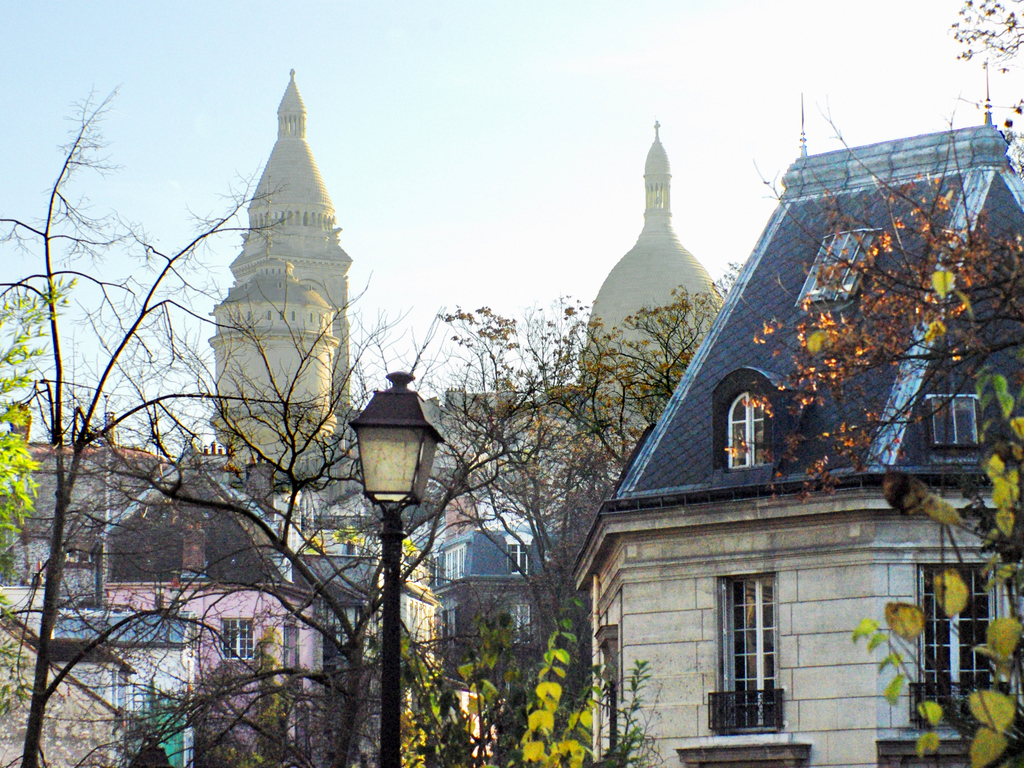
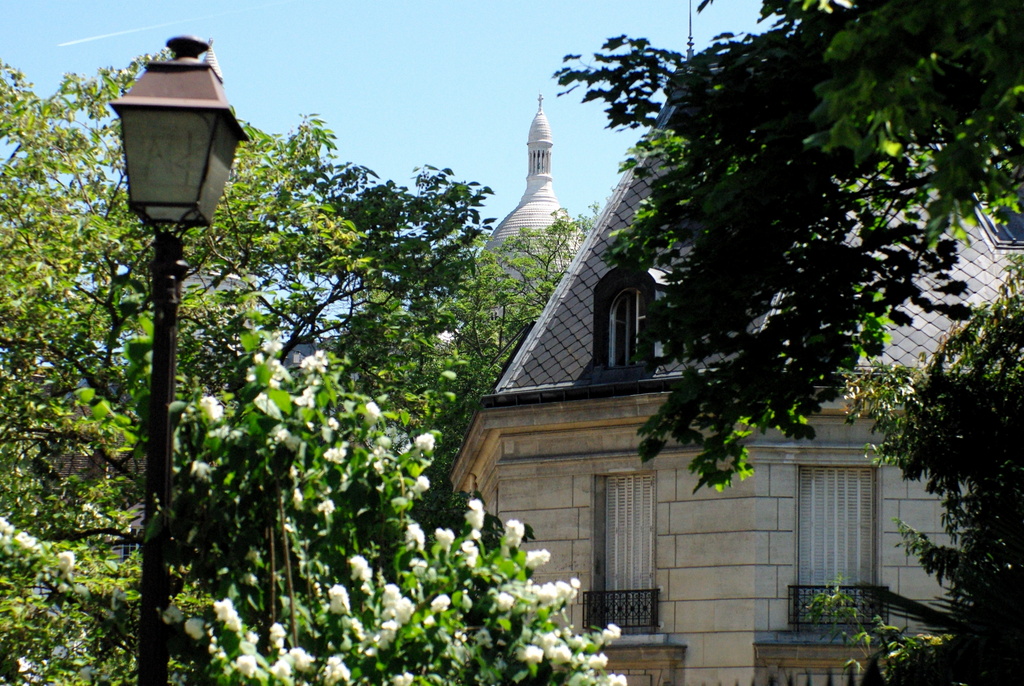
It ends at the Place Casadesus with a typical street view of Montmartre.
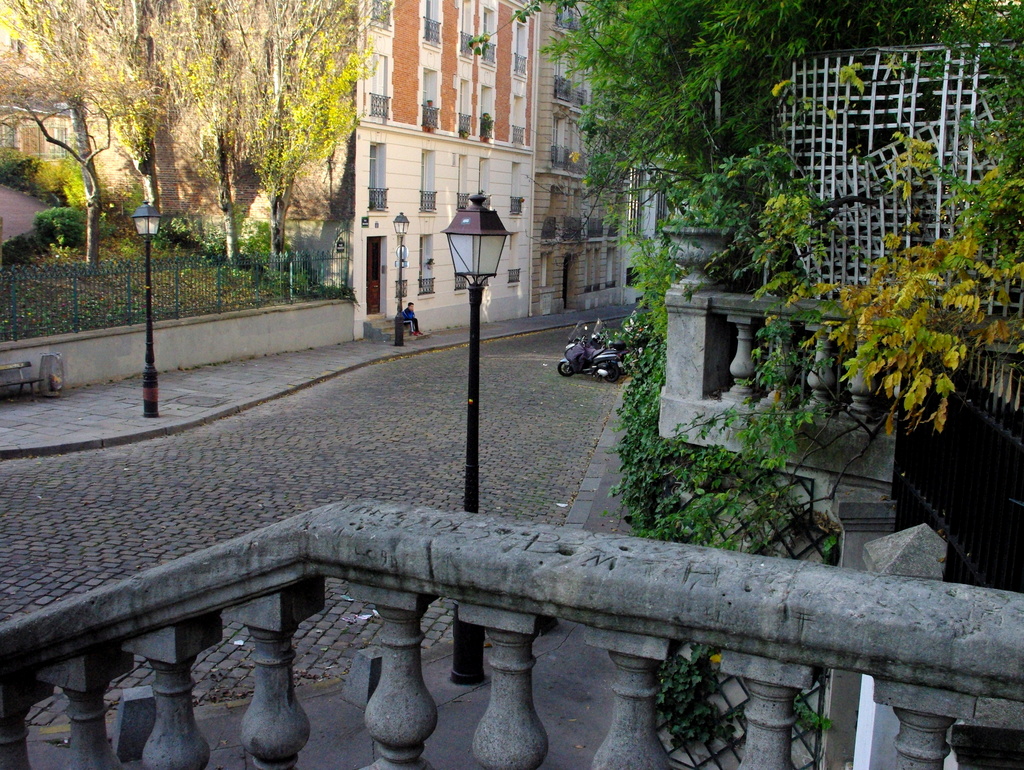
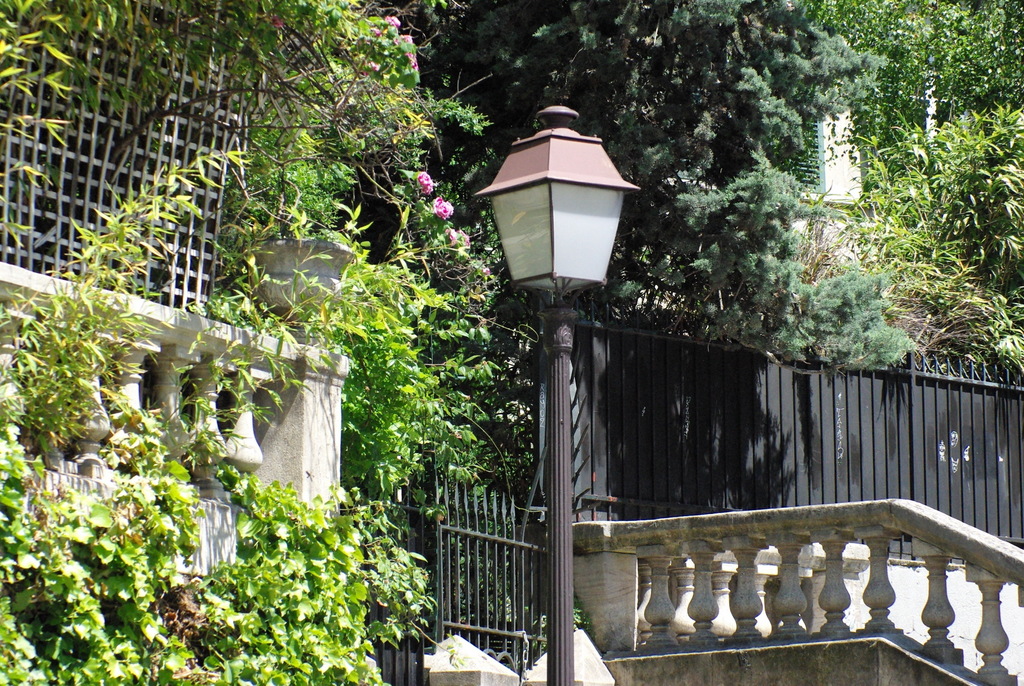

Square Suzanne Buisson
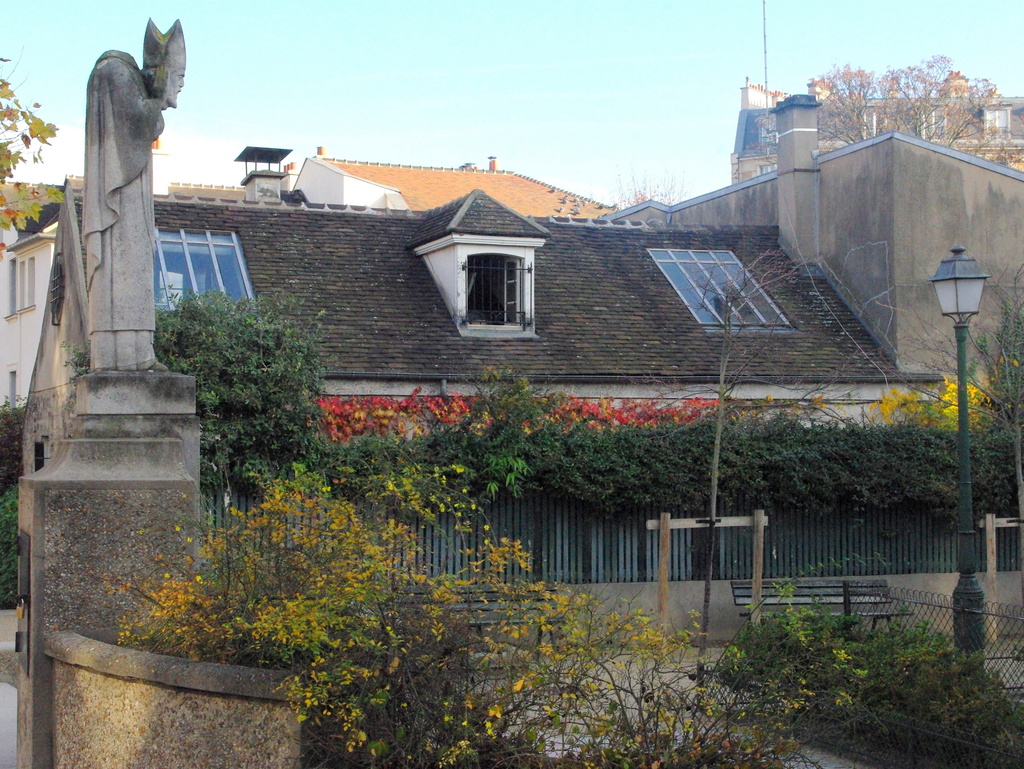
The green square was part of the grounds of the Château des Brouillards, a folly built in the 18th century. Its name refers to Suzanne Buisson, a politician and resistant who died in deportation during WW2.
In the square, a statue depicting St. Denis holding his head. The legends go that on that very spot the first bishop of Paris took a pause to wash his decapitated head before continuing his journey to the present-day city of Saint-Denis.
Villa Léandre
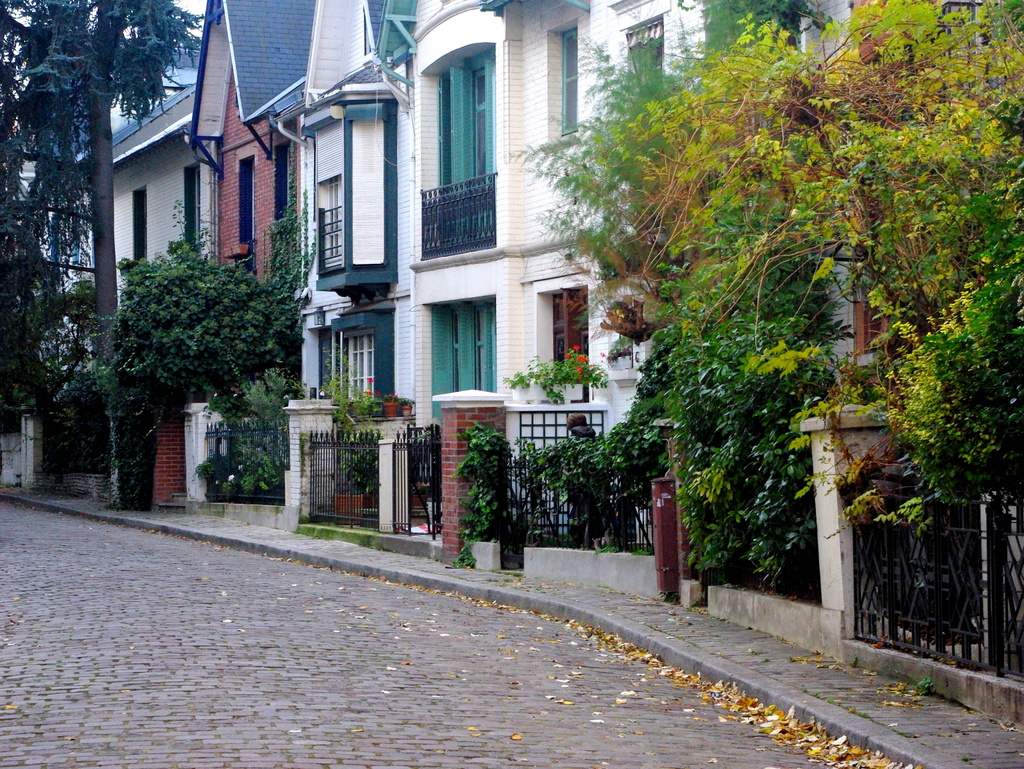
Just off the avenue Junot, the cobblestone street known as ‘Villa Léandre‘ is a haven of peace. The cul-de-sac is bordered by a group of perfect Art Deco houses built in 1926, including a few houses built with bricks and bow windows reminiscent of England.
Rue Lepic
The old quarry street of rue Lepic is one of Montmartre’s most famous streets. It takes its name from General Louis Lepic (1765-1827) who earned Napoleon’s gratitude at the Battle of Eylau in 1807.
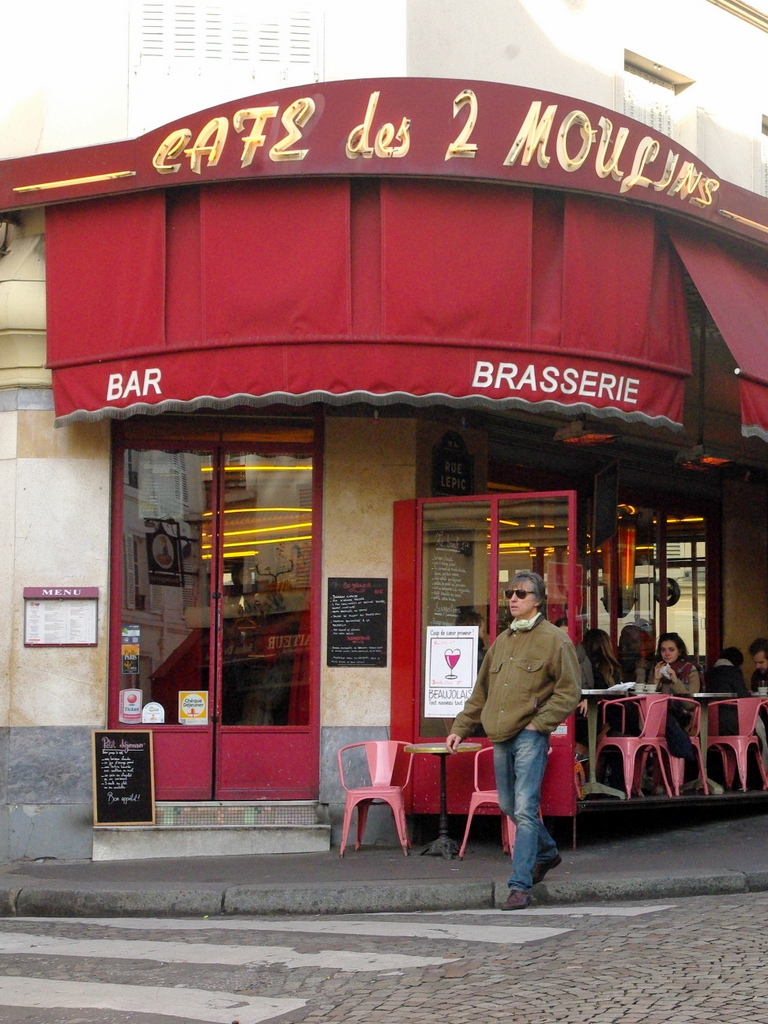
Winding up the steep mound of Montmartre, rue Lepic has gained worldwide exposure with the movie ‘Amélie’ whose main character works at the Café des Deux Moulins (number 15). Many celebrities have resided in the street including French writer Céline, and painters Van Gogh and Willette.
The rue Lepic gives access to Montmartre’s two surviving windmills commonly named ‘Moulin de la Galette’: Moulin du Radet and Moulin de Blute-Fin. The first one was built in 1717 and the second in 1622.
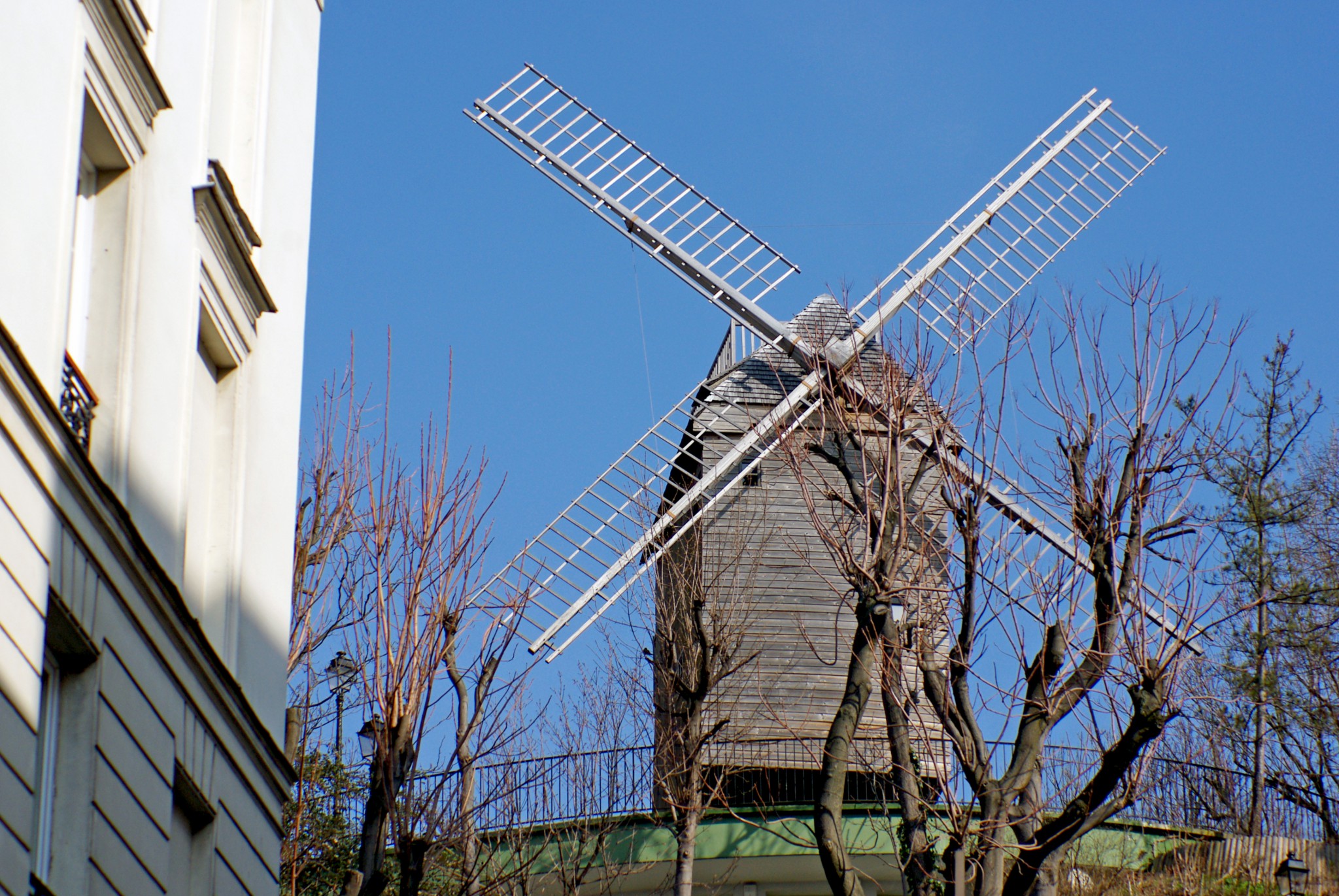
The windmills inspired many painters: Corot, Renoir, Toulouse-Lautrec, Van Gogh and Willette.
At the bottom of the rue Lepic on the corner of Boulevard de Clichy and Place Blanche stands another windmill: the Moulin-Rouge. The cabaret was founded in 1889 by Joseph Oller and Charles Zidler at the bottom of the Hill of Montmartre.
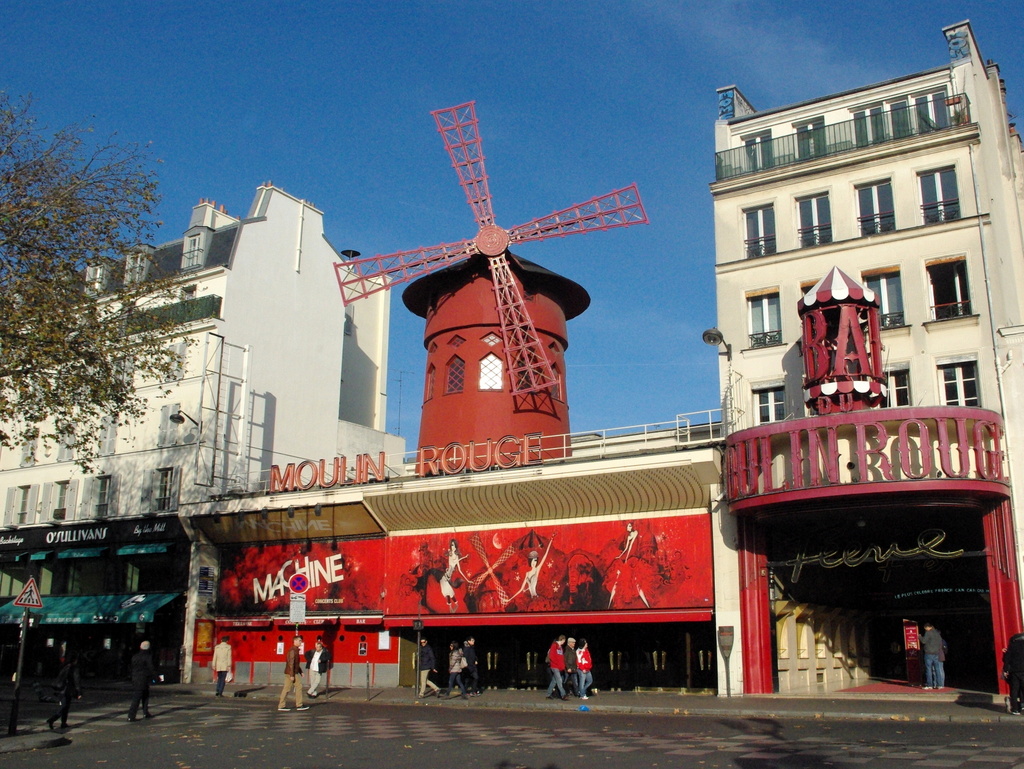
Find out more about the windmills of Montmartre.
Place Émile Goudeau
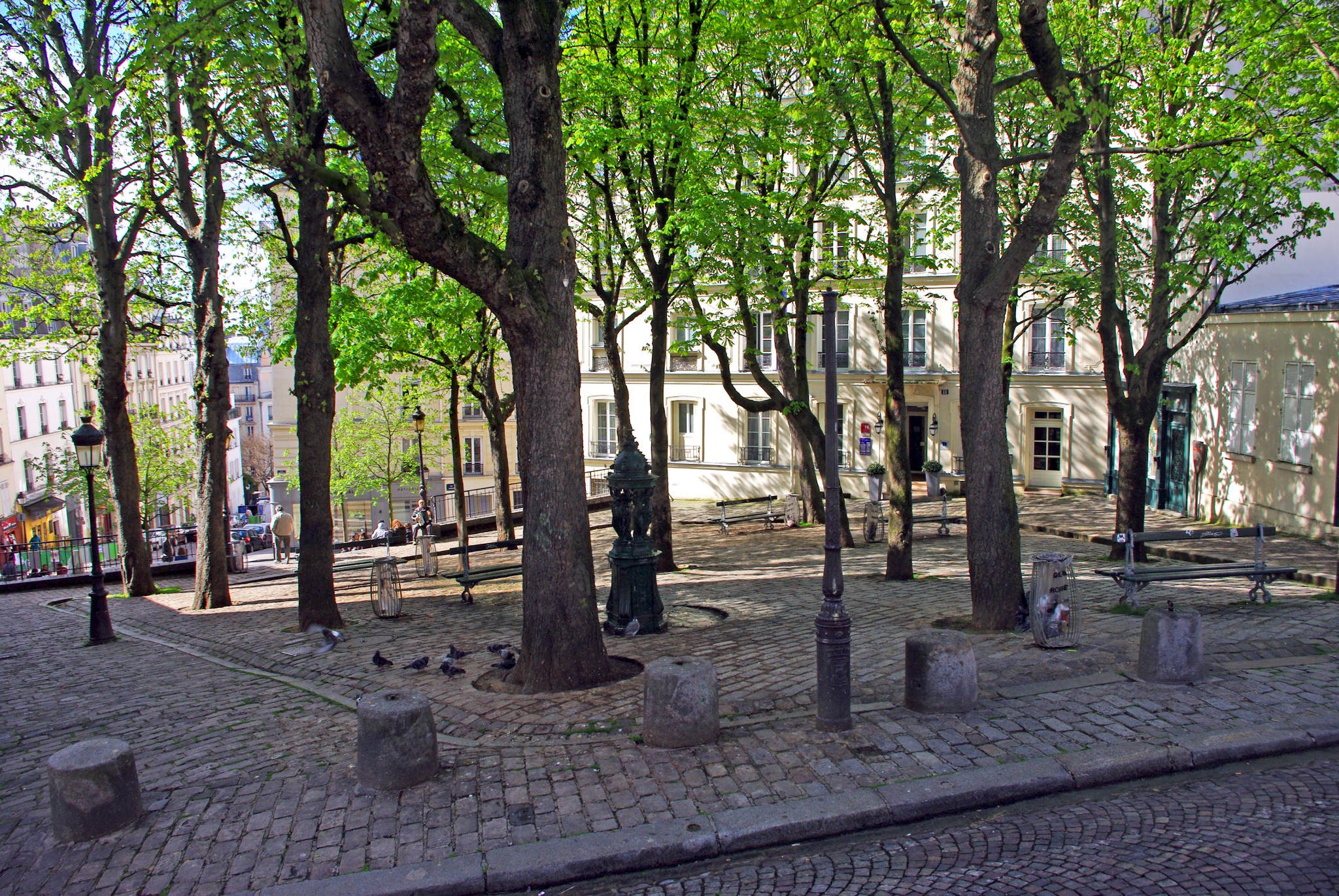
The shady square of Place Émile Goudeau was frequented from 1900 by a number of artists and writers (Picasso, Max Jacob, Apollinaire) who met and lived in shabby conditions at Le Bateau-Lavoir (number 13). Formerly a piano factory, the wooden house was home to talented artists and poets of the day. It was there that in 1907 Picasso painted his famous masterpiece ‘Les Demoiselles d’Avignon’. The place was burnt down in 1970 and rebuilt as a concrete replica to house artists’ studios and apartments.
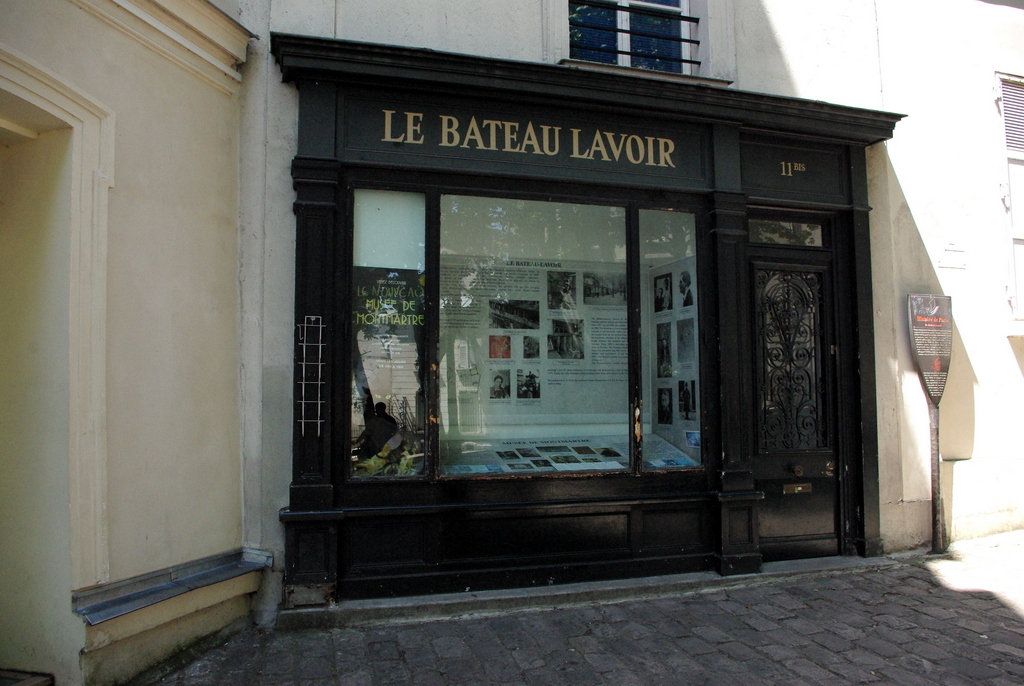
Place des Abbesses
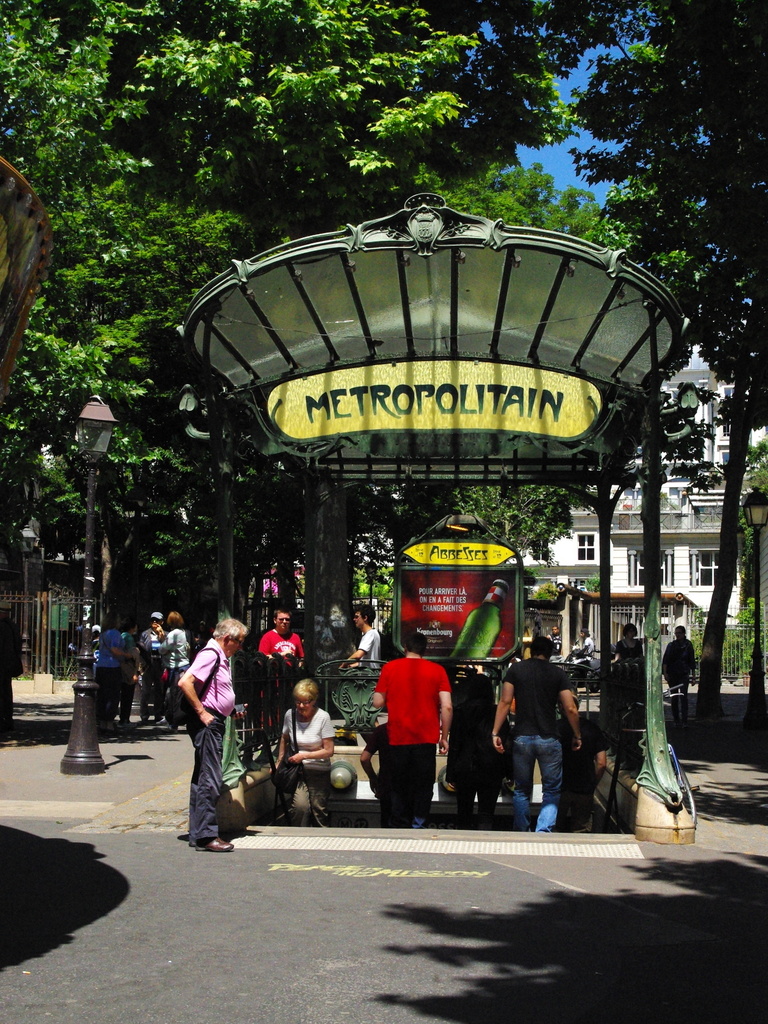
The busy little square of Place des Abbesses was named after the 46 abbesses that directed the royal abbey of Montmartre destroyed during the French Revolution.
It features a stunning entrance to the metro station of Abbesses (line 12). Designed by Hector Guimard (1867-1942) in Art Nouveau style, the metro entrance has a glass roof with green wrought-iron arches and amber lights. Unlike the other surviving Guimard metro entrance at Porte Dauphine (line 2), Les Abbesses does not have panelling.
The square hosts a little Christmas market each December.
On the Southside of the Place des Abbesses is the St. John of Montmartre Church, built in reinforced concrete in 1904 by Baudot.
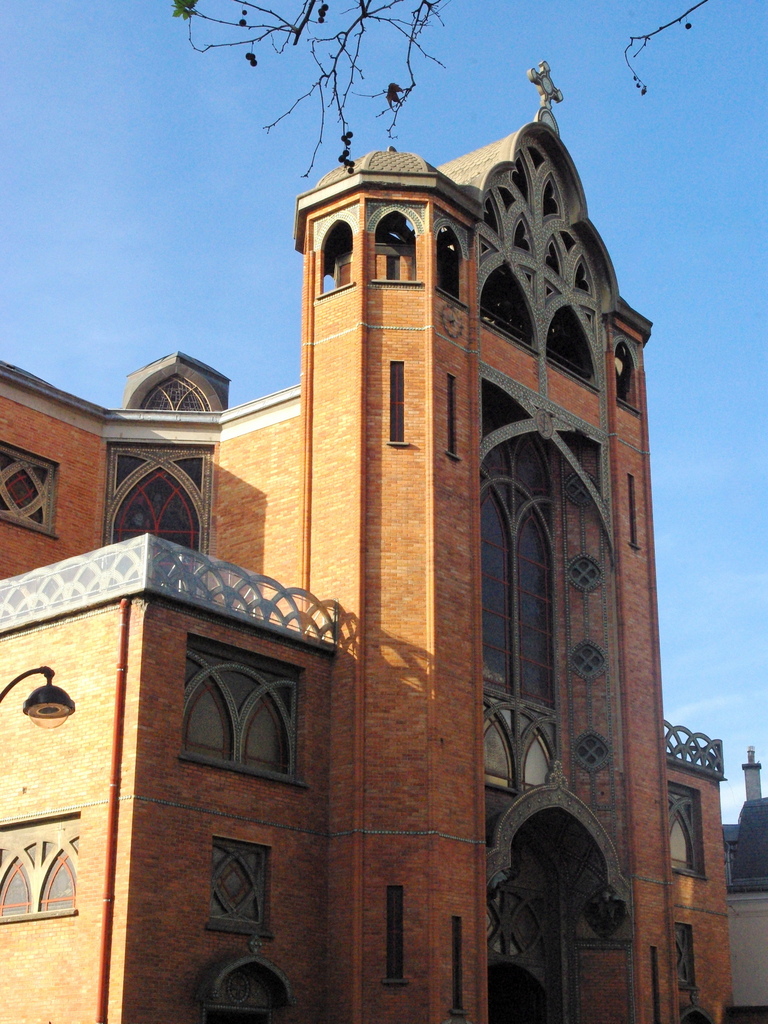
The animated rue des Abbesses is a must-see street for shopping with deli stores (including fruit and vegetable, caterers, bakeries, cheese-shop…) and touristy cafés.
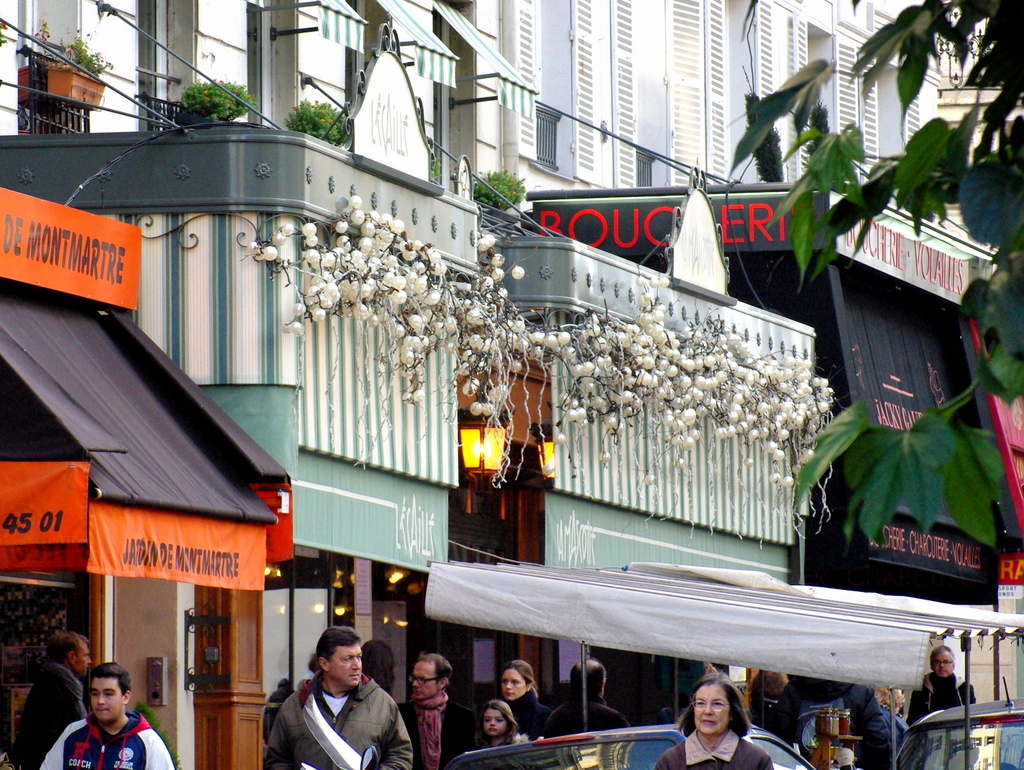
Visit the Tourist Office of Montmartre located place du Tertre.
Have you been to Montmartre too? Share with us what you liked (or disliked) by commenting below!
Pin Montmartre for later!
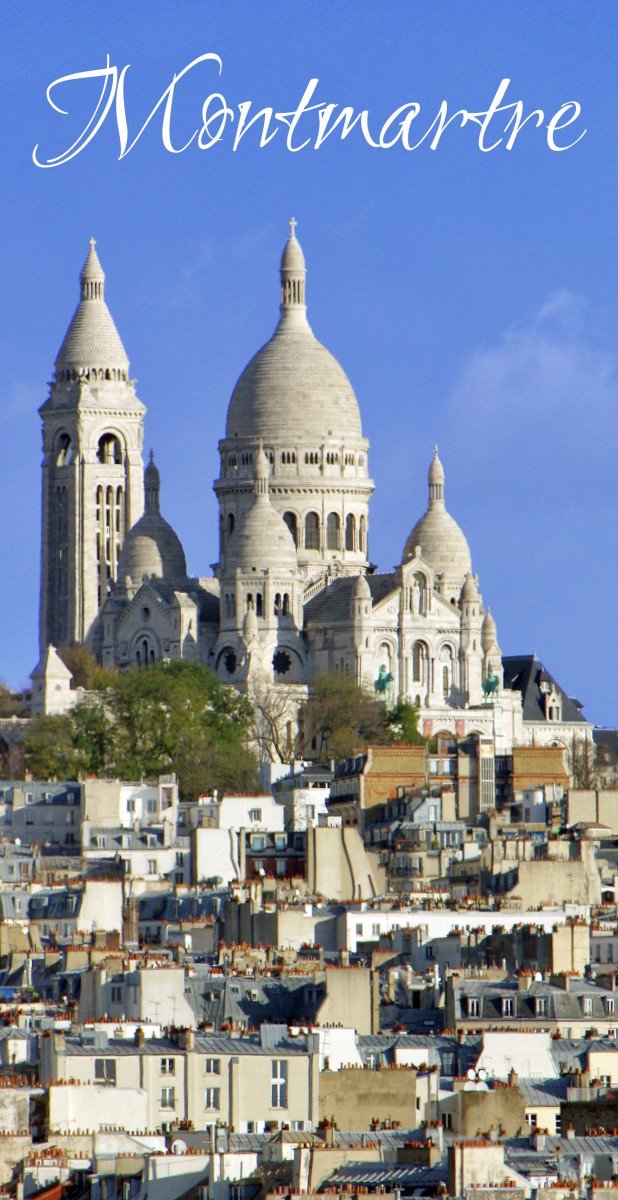

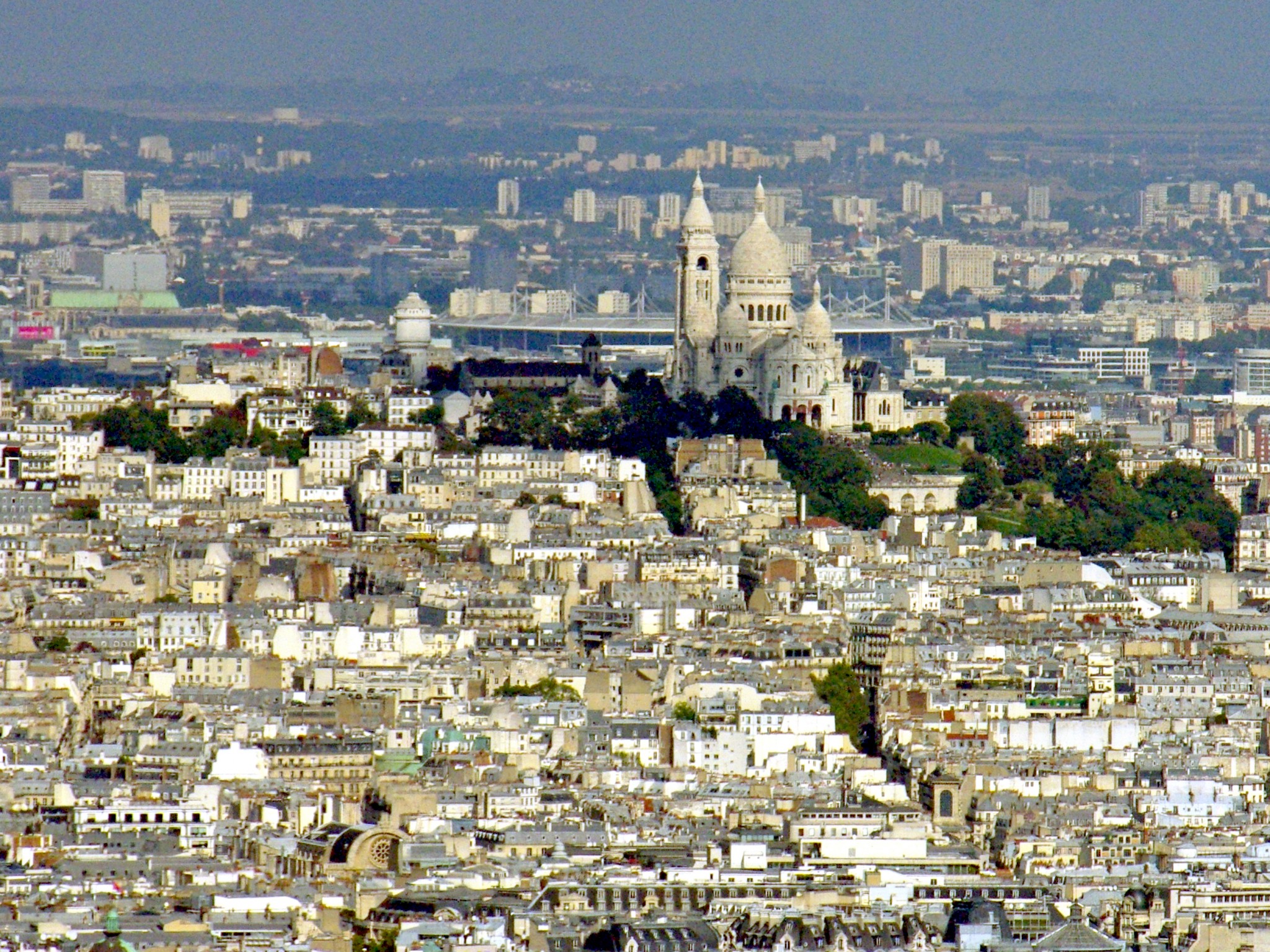

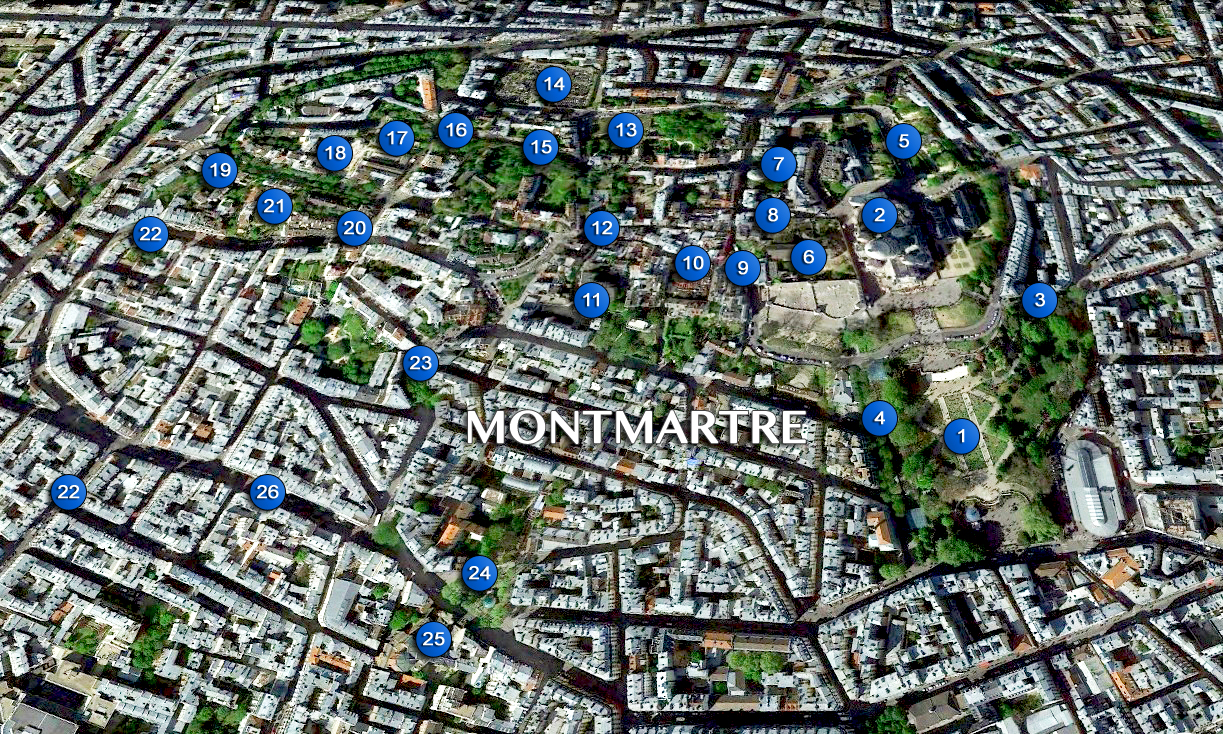



This is my first time visit at here and i am actually impressed to read everthing at one
place.
Bon jour Pierre
My goodness you are a wealth of knowledge! I enjoy your comments, information and photos IMMENSELY!!!! Thank You SOOO Much !!!!!!
Cindy Kozlowski
Thank you Cindy for your comment! I’m glad to hear you appreciate the blog! 🙂 Pierre
Great article on Montmartre; I need to take it with me the next time I go. I’ve had 10 visits to Paris, and usually try to get to Montmartre during those visits.It’s really so charming and a unique experience. Do they still have the carousel at Place des Abbesse? And the funicular near the abbey? I usually stay in an Airbnb/apartment rental and really enjoyed the couple of times I stayed in Montmartre.
Thank you for your articles. I love going beneath the surface (away from the popular tourist spots) with all your discoveries! But some of the touristy spots are not to be missed, too! Your photos are wonderful.
Annecy was also breathtaking.
Thank you Janis, unless I’m mistaken, the merry-go-round still exists at Place des Abbesses, as the funicular that climbs to the Sacré-Cœur basilica.
We love the Montmartre area and have seen most of the places you have thoroughly pointed out in this well done article, but not ALL! We plan to return to Paris this coming Spring for my 6th visit over the years, and now have more treasures to search for in this gorgeous, quaint part of Paris. LOVED the history, and, as usual, your awesome photos! YOU, Pierre are a wonderful wealth of information!
You’re welcome Lisa, thank you so much! 🙂
The Parc de la Turelure reminds me of this traditional song that is featured on Nana Mouskouri's album, "Vieille chansons de France."
🎵Se promenant un matin
🎵Dans un bois à l'aventure
🎵Turelure turelure
🎵Il rencontre en son chemin
🎵Tinlin tintin tintin
🎵Tinlin tintin
🎵Un tendron dans la verdure
🎵Turelure turelure
🎵Lon lon la
🎵D'où venez-vous ?
🎵Je n'aimerai jamais que vous
Très sympathique, cette chanson ! Thank you David!